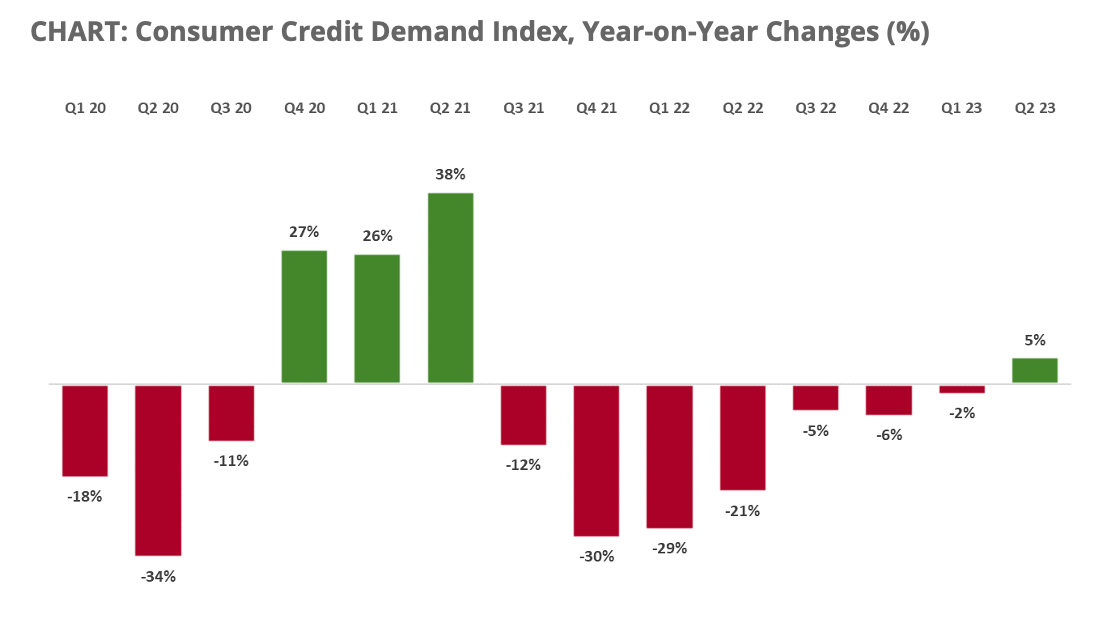This after seven consecutive quarters of declines, Equifax data shows

Consumer credit demand has jumped in the June quarter, after seven consecutive quarters of declines, the latest Equifax data has shown.
The Equifax Quarterly Consumer Credit Demand Index for June 2023 reported a marked increase in unsecured credit demand, up +15.1% year-on-year for the June quarter.
The increase was driven by ongoing growth in credit card demand, which was up +16 versus the same period in 2022, along with strong personal loan demand, which lifted +14.5% year-on-year. Mortgage demand, meanwhile, dipped -1.7% in the June quarter yoy.
Angus Luffman (pictured above), Equifax managing director, said the rise in overall credit demand is a positive sign and the result of several factors.
“After seven quarters of decline, we have seen an upward shift in consumer credit demand,” Luffman said. “This increase is driven by demand for unsecured credit, particularly from applicants 30 years and older.”
Credit demand increased overall across most regions in Q2, except in Nelson (-1.0%) and Manawatu-Wanganui (-0.3%), where there’s soft demand.
“The rise in demand is a continuation of the stronger appetite for credit card products seen in recent quarters,” Luffman said. “More demand from the older age groups is indicative of the return of international travel.”
During the second quarter, there was strong demand for credit card in the regions of Otago (+24.3%), Taranaki (+24.3%), Gisborne (+22.7%), Canterbury (+21.0%), Hawke’s Bay (+21.0%) and Tasman (+21.0%), except in Southland, where demand was just at +2.8%.
When it comes to personal loans, demand lifted across the regions over the same period, headed by Otago with +24.6%. Also experiencing strong demand were Southland (+17.3%), Auckland (+15.5%), and West Coast (+15.4%).
“Personal loans are often used to fund bigger-ticket items such as cars, equipment and home improvement,” Luffman said. “The Clean Car discount saw strong demand for auto loans in the months leading up to the 1 July deadline as Kiwis took advantage of the rebates on offer. Despite the growth in recent quarters, unsecured credit demand remains well below pre-pandemic levels.”
Despite eight consecutive quarters of declines, the pace of falls has eased considerably to just -1.7% compared to the same period in 2022. Nelson recorded the largest decline, at -15%, followed by Gisborne (-7.2%) and Hawke’s Bay (-6.8%). Marlborough (+9.9%), West Coast (+8.5%), Otago (+7.0%), and Taranaki (+6.9%), meanwhile, saw improvements in demand, Equifax reported.
“Mortgage demand, measured by credit enquiries, is a lead indicator of housing turnover and, in turn, price movements,” Luffman said. “Whilst still in negative territory, demand for mortgages has continued to stabilise after the significant double-digit declines seen over the last 12 months.
Mortgage demand has improved to being broadly in line with pre-pandemic levels, a positive sign as we head into the remainder of the year.”

Use the comment section below to tell us how you felt about this.



